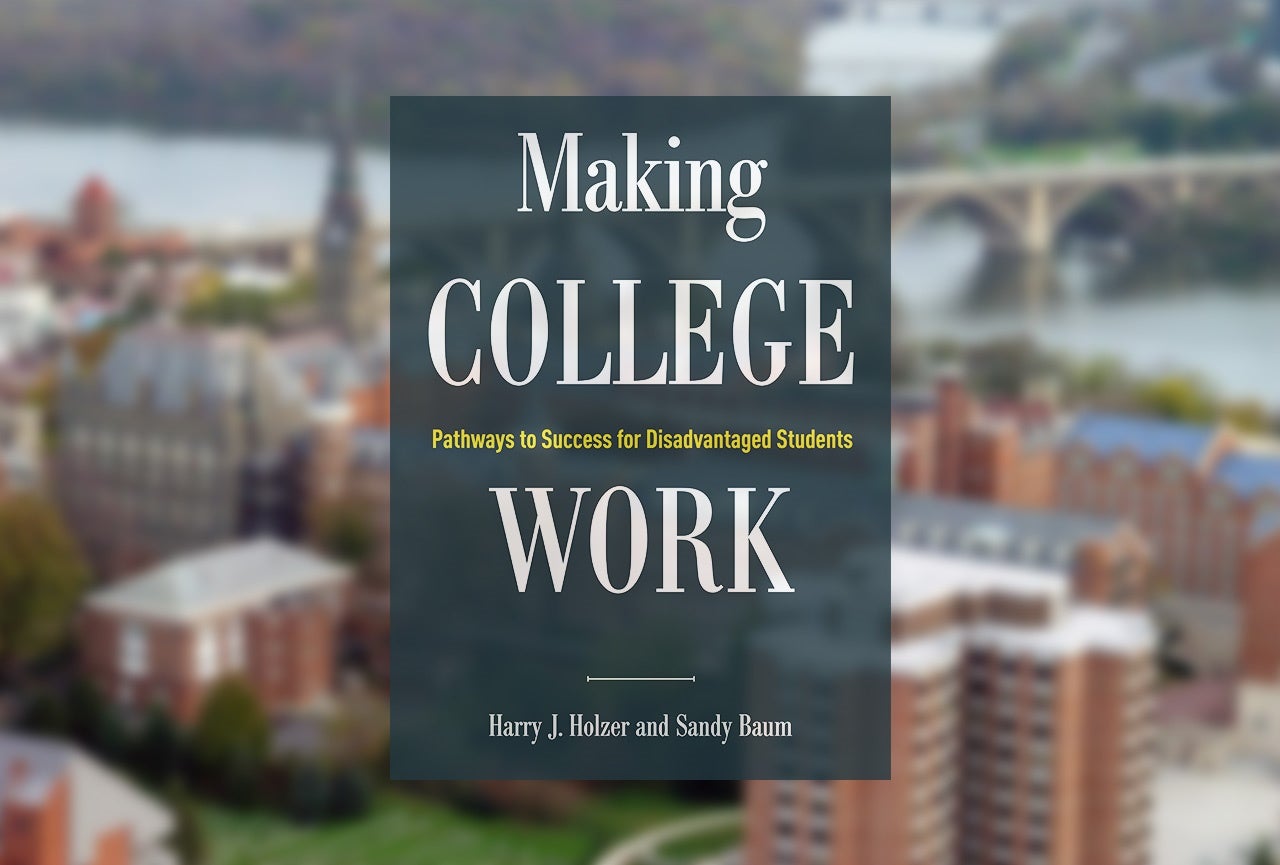Meeting Students Where They Are
In their new book, Making College Work, McCourt Professor Harry Holzer and co-author Sandy Baum of the Urban Institute explore practical solutions for improving higher education opportunities for disadvantaged students.

September 30,2017–Most Americans view higher education as a stepping stone toward achieving the American dream. A recent opinion survey conducted by the Pew Research Center found that 67 percent of Americans say a four-year degree offers good preparation for a well-paying job. However, only one-third of Americans today are moving up the economic ladder. This begs the question, is higher education serving its intended purpose?
Harry Holzer, LaFarge SJ Professor at the McCourt School of Public Policy at Georgetown, and Sandy Baum, Senior Fellow at the Urban Institute, argue that outcomes are bleak for too many college students.
Troubling Statistics
In their new book, Making College Work: Pathways to Success for Disadvantaged Students, Holzer and Baum investigate some troubling statistics. Among them, that 40 percent of all students at four-year colleges, and over 70 percent who begin in two-year colleges, have not completed a degree or certificate six years later.
Among the obvious factors holding students back are the financial hurdles, the complexity of the student aid system, the weak academic preparation of students, the opportunity costs and the time needed for completion. However, these factors alone don’t account for the disparity in outcomes for students who come from disadvantaged backgrounds. There are also institutional barriers that disproportionately affect these students.
Inadequate Resources
One barrier for students is that community colleges have inadequate resources relative to their four-year counterparts. “On average, full-time students get less than half the subsidy from the state that equivalent four-year students get, though they have greater need” Holzer said.
Furthermore, state subsidies aren’t structured in a way to promote high-skill programs. “I think students at a minimum need to be better informed about what fields are in high demand,” Holzer argued. And community colleges need more rewards for expanding teaching in high-demand fields, where the costs of instructors and equipment are high.
The Problem with For-Profit Colleges
Another source of problems for disadvantaged students is for-profit colleges. “The downside of for-profits is that they are very expensive and they heavily market toward low-income students. They sign up a lot of low-income students with Pell grants, and when students don’t finish they end up with a lot more debt,” Holzer explained.
Among the solutions that Holzer supports, is the guided pathway model for individual colleges. The model, which provides students more structured course selections to guide them toward graduation, has produced positive results for Georgia State, Florida State, and the entire Tennessee system. But more rigorous evaluation is needed to see whether positive impacts occur widely when these models are used and persist over time.
Holzer and Baum will be exploring this policy issue in-depth at a McCourt policy event next Tuesday, October 3, from 6 p.m. – 7 p.m. Anyone who is interested in education or labor policy is encouraged to RSVP ahead of the event: https://www.eventbrite.com/e/making-college-work-pathways-to-success-for-disadvantaged-students-tickets-37883704179
- Tagged
- Research